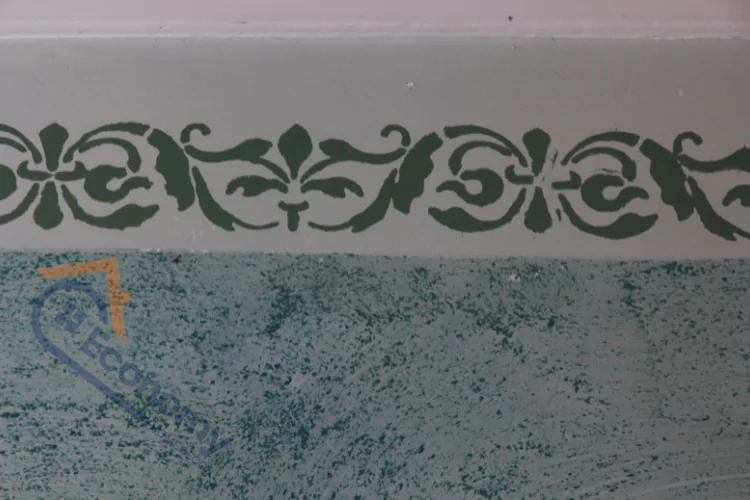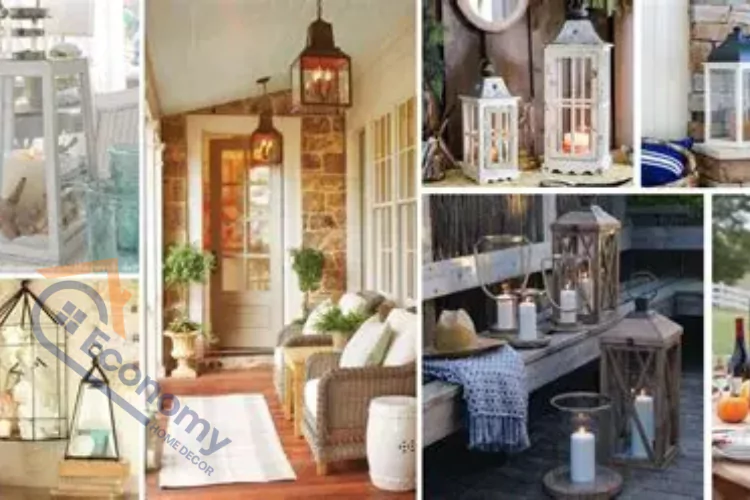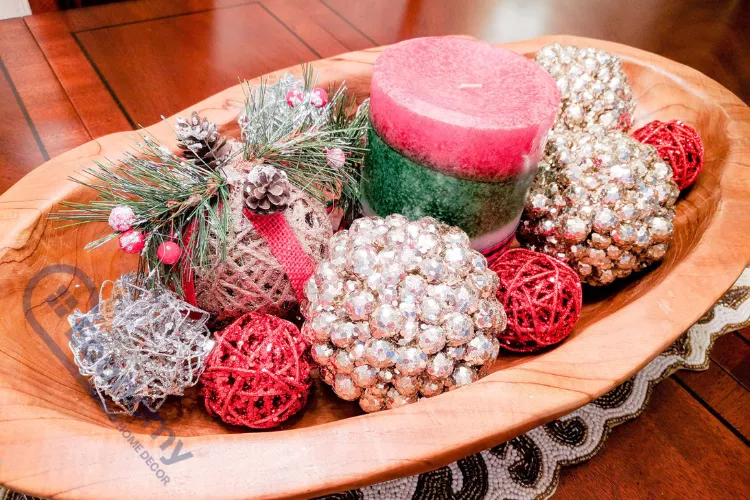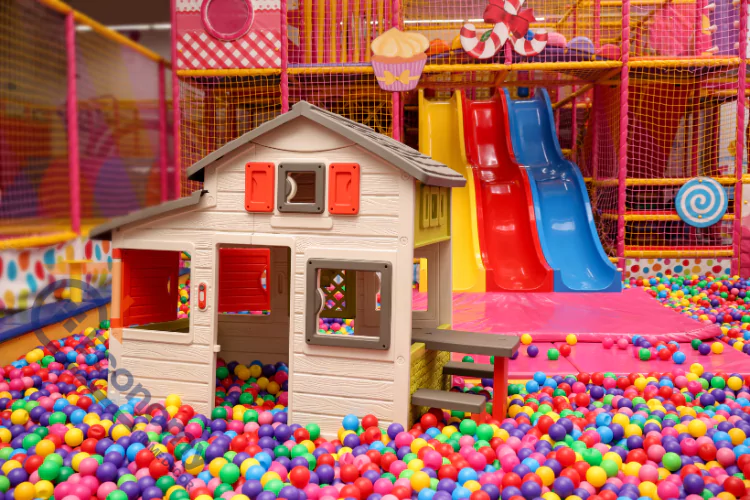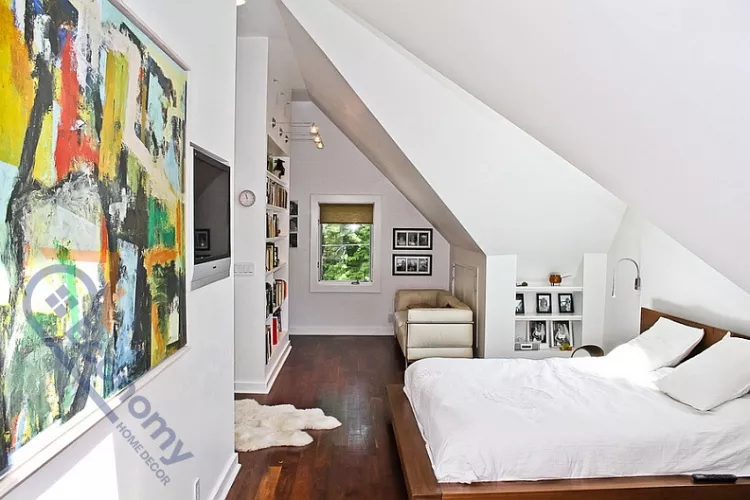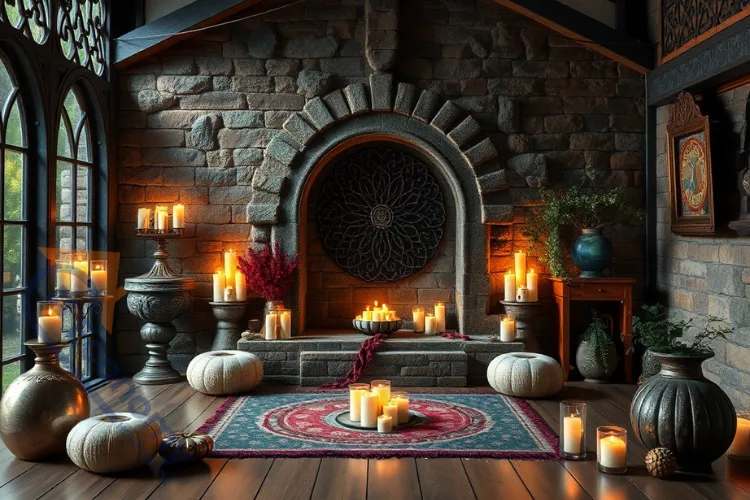Transform your home into a personalized masterpiece with the timeless art of stenciling! Whether you’re a DIY enthusiast or just starting your decorating journey, decorative stencils offer an affordable and creative way to add character to any space. From elegant wall stencil decor to charming accent pieces, stenciling has made a remarkable comeback in modern home design, proving that handmade touches never go out of style.
Decorating with stencils allows you to achieve custom looks without the expense of wallpaper or professional artwork. With countless patterns, sizes, and styles available, you can create everything from subtle sophistication to bold statement walls. The beauty of stencil decorating ideas lies in their versatility – they work beautifully in traditional homes, modern apartments, and everything in between.
Key Takeaways
- Stenciling is an affordable way to add personality to any room
- Choose the right materials and tools for professional-looking results
- Start with simple projects before tackling complex designs
- Practice proper technique for clean, crisp lines
- Consider the room’s purpose and existing decor when selecting patterns
What Makes Stenciling Perfect for Modern Homes
Decorative stencils have evolved far beyond the country craft projects of decades past. Today’s home decor stencils feature sophisticated designs that complement contemporary interiors while offering the personal touch that mass-produced items simply cannot provide. The resurgence of handmade and artisanal elements in home design has brought stenciling back into the spotlight as a favored decorating technique.
Modern homeowners appreciate stenciling because it offers complete creative control. Unlike wallpaper or wall decals, decorating stencils for walls can be customized in color, scale, and placement to perfectly suit your space. You can create a subtle accent wall with soft, neutral tones or make a dramatic statement with bold colors and large-scale patterns. The technique works equally well for renters who want to personalize their space without permanent changes and homeowners looking to add custom details throughout their property.
The environmental benefits of stenciling also appeal to eco-conscious decorators. Rather than purchasing new furniture or accessories, you can refresh existing pieces with decorative stencils for painting. This sustainable approach to decorating reduces waste while creating unique, personalized items that reflect your individual style and creativity.
Essential Materials and Tools for Stenciling Success
Success with wall decor stencils begins with having the right materials and tools. Quality supplies make the difference between amateur-looking results and professional-finish projects that you’ll be proud to display. Understanding what you need before starting ensures smooth project execution and beautiful final results.
Basic Stenciling Supplies:
- High-quality stencils (plastic, mylar, or cardboard)
- Acrylic paints or spray paints designed for your surface
- Stencil brushes in various sizes
- Foam rollers or sponges
- Painter’s tape or repositionable spray adhesive
- Level and measuring tools
- Drop cloths or plastic sheeting
- Paper towels and cleaning supplies
The quality of your decorative stencils significantly impacts your results. Mylar and plastic stencils offer durability and clean edges, making them ideal for multiple uses and detailed patterns. Decorative painting stencils made from these materials resist paint bleeding and maintain their shape through repeated use. While cardboard stencils cost less, they’re best suited for single-use projects or simple designs where precision isn’t critical.
Paint selection depends on your surface and desired finish. Acrylic paints work well for most stencil home decor projects, offering good coverage and easy cleanup. For decorating walls with stencils, choose high-quality interior paint that matches your existing wall color or complements your room’s color scheme. Specialty paints like metallic or chalk paint can create unique effects that add depth and interest to your stenciled designs.
Living Room Stenciling Ideas That Wow
The living room serves as your home’s centerpiece, making it the perfect canvas for stunning decorative wall stencils. This space offers numerous opportunities to incorporate stenciling, from creating dramatic accent walls to adding subtle details that enhance your existing decor. The key is choosing patterns and colors that complement your furniture and overall design aesthetic while creating visual interest.
Popular Living Room Stenciling Projects:
- Feature walls behind sofas or entertainment centers
- Ceiling medallions and border treatments
- Fireplace surrounds and mantels
- Coffee table and side table makeovers
- Lampshade customization
- Throw pillow covers
- Wall art panels
Large decorative stencils work beautifully for creating statement walls in living rooms with high ceilings or expansive wall space. Damask patterns, geometric designs, and botanical motifs add sophistication without overwhelming the room. For smaller living areas, consider using decorative border stencils to add interest around windows, doors, or ceiling lines. These subtle touches create visual depth while maintaining the room’s open, airy feel.
Color selection plays a crucial role in living room stenciling success. Neutral tones like soft grays, warm beiges, and creamy whites create elegant, timeless looks that won’t compete with your furniture or artwork. For bolder statements, consider using colors that appear in your existing decor – perhaps picking up the blue from your throw pillows or the green from your plants. This approach ensures your stenciled elements feel intentional and cohesive with your overall design scheme.
| Stenciling Project | Difficulty Level | Time Required | Best Patterns |
|---|---|---|---|
| Accent Wall | Intermediate | 4-6 hours | Damask, Geometric, Floral |
| Furniture Makeover | Beginner | 2-3 hours | Small Florals, Stripes |
| Ceiling Medallion | Advanced | 3-4 hours | Mandala, Traditional |
| Border Treatment | Beginner | 1-2 hours | Simple Repeating Patterns |
| Pillow Covers | Beginner | 1 hour each | Small Motifs, Text |
Bedroom Stenciling for Personal Sanctuary
Your bedroom should reflect your personal style while promoting rest and relaxation. Stencil decor in bedrooms can range from romantic and dreamy to modern and minimalist, depending on your preferences and the overall aesthetic you want to achieve. The intimate nature of bedrooms makes them perfect for experimenting with more personal or bold design choices that might feel overwhelming in public spaces.
Bedroom Stenciling Inspiration:
- Headboard alternatives using large wall stencils
- Dresser and nightstand transformations
- Closet door makeovers
- Ceiling designs for visual interest
- Mirror frame enhancements
- Jewelry box and accessory customization
Creating a stenciled headboard effect offers a cost-effective alternative to purchasing expensive upholstered or wooden headboards. Decorative stencils for walls in intricate patterns can create the illusion of an ornate headboard while allowing you to change the look easily if your style preferences evolve. This approach works particularly well in rental properties where permanent changes aren’t possible.
Decorative stencils for wood can transform plain bedroom furniture into custom pieces that perfectly match your decor. Consider stenciling drawer fronts, dresser tops, or nightstand surfaces with patterns that complement your bedding or window treatments. Soft, romantic patterns like roses, vines, or delicate scrollwork create feminine touches, while geometric designs and clean lines appeal to those preferring modern aesthetics.
Kitchen Stenciling: Function Meets Style
Kitchens present unique opportunities for decorating with stencils, combining functional improvements with aesthetic enhancements. This hardworking space benefits from decorative elements that can withstand daily use while adding personality and warmth. The key to successful kitchen stenciling lies in choosing appropriate locations and using durable materials that can handle moisture, heat, and frequent cleaning.
Kitchen backsplashes offer excellent canvases for decorative paint stencils, creating custom tile effects at a fraction of traditional tile costs. Stenciled backsplashes can mimic expensive ceramic patterns, create faux subway tile looks, or add colorful Mediterranean-inspired designs. When properly sealed, these treatments provide both beauty and functionality, protecting walls from cooking splatters while adding visual interest to the space.
Cabinet makeovers using stencil for furniture decorating can completely transform your kitchen’s appearance without the expense of full replacement. Stenciling cabinet doors, drawer fronts, or even the interior of glass-front cabinets adds character and can help tie together different elements of your kitchen design. Consider using patterns that complement your countertops, hardware, or window treatments for a cohesive look.
Kitchen Stenciling Projects by Difficulty:
- Beginner: Cabinet hardware templates, simple border designs
- Intermediate: Backsplash patterns, cabinet door centers
- Advanced: Full cabinet transformations, ceiling treatments
Safety considerations are paramount when stenciling in kitchens. Use paints and sealers appropriate for areas exposed to moisture and heat. Ensure proper ventilation during application and allow adequate curing time before exposing stenciled surfaces to normal kitchen activities. These precautions ensure your beautiful stencilwork maintains its appearance and durability over time.
Bathroom Stenciling Ideas for Spa-Like Retreats
Bathrooms offer intimate spaces perfect for creative wall stencil decor that transforms utilitarian rooms into spa-like retreats. The smaller scale of most bathrooms makes them ideal for experimenting with bold patterns or colors that might overwhelm larger spaces. Additionally, the contained nature of bathroom projects makes them perfect for beginners to practice techniques before tackling larger rooms.
Decorative stencils for walls in bathrooms can create stunning accent walls behind vanities, around mirrors, or in shower areas (when properly sealed). Consider patterns inspired by nature – flowing water designs, botanical motifs, or ocean themes that enhance the bathroom’s connection to cleansing and renewal. Geometric patterns also work beautifully, creating modern, sophisticated looks that feel fresh and contemporary.
Moisture resistance is crucial for bathroom stenciling success. Choose high-quality, moisture-resistant paints and apply appropriate sealers to protect your work. Areas near showers and tubs require special attention to ensure the stenciled designs maintain their beauty despite exposure to humidity and occasional water contact. Proper surface preparation and sealing techniques ensure your bathroom stenciling projects remain beautiful for years to come.
Bathroom Stenciling Considerations:
- Use moisture-resistant materials and sealers
- Focus on areas away from direct water exposure
- Consider ventilation during application
- Choose patterns that complement tile and fixtures
- Test paint adhesion in inconspicuous areas first
Children’s Room Stenciling Adventures
Children’s rooms provide the perfect opportunity to embrace playful, colorful stencil decorating ideas that spark imagination and creativity. Unlike other areas of the home where sophistication might be the goal, kids’ rooms can accommodate bold colors, whimsical patterns, and fun themes that reflect their personalities and interests. The temporary nature of children’s preferences also makes stenciling an ideal choice since designs can be easily updated as they grow and change.
Home decor stencils for children’s rooms can transform plain walls into magical storytelling spaces. Consider creating themed environments like enchanted forests complete with tree silhouettes and woodland creatures, underwater adventures featuring fish and coral patterns, or outer space scenes with stars, planets, and rockets. These immersive environments stimulate creativity while providing personalized spaces that children truly call their own.
Interactive stenciling projects can involve children in the decorating process, creating meaningful memories while teaching valuable skills. Simple patterns like alphabet letters, numbers, or basic shapes allow young children to participate safely while building pride in their contribution to their room’s appearance. Flower stencils for decorating work wonderfully for creating garden scenes where children can “plant” their own painted flowers at their height level.
Age-Appropriate Stenciling Projects:
- Toddlers (2-4): Large, simple shapes and hand prints
- School Age (5-10): Alphabet borders, favorite characters
- Tweens (11-13): Geometric patterns, inspirational quotes
- Teens (14+): Sophisticated patterns, accent walls
Dining Room Elegance Through Stenciling
The dining room sets the stage for memorable meals and gatherings, making it an ideal location for sophisticated decorative stencils that create atmosphere and elegance. This formal space allows for more dramatic treatments that might feel excessive in casual areas, providing opportunities to showcase your stenciling skills with intricate patterns and refined color palettes.
Decorative wall stencils for painting in dining rooms often feature classical motifs like damask patterns, ornate borders, or botanical designs that complement traditional dining furniture and create timeless appeal. These patterns work particularly well when executed in subtle tone-on-tone color schemes that add texture and visual interest without competing with artwork, china displays, or other decorative elements in the room.
Chair rail and wainscoting treatments using decorative border stencils can add architectural interest to dining rooms lacking built-in millwork. These stenciled elements create the illusion of expensive custom woodwork while allowing for color customization that perfectly complements your dining room’s color scheme. The technique works especially well in older homes where adding authentic millwork might be cost-prohibitive or structurally challenging.
Consider the lighting in your dining room when planning stenciling projects. Chandelier and natural light will highlight the texture and depth of your stenciled patterns, so choose designs that will look beautiful under various lighting conditions throughout the day and evening. Test your color choices under different lighting scenarios to ensure they maintain their intended appearance during both daytime and evening dining experiences.
Home Office Inspiration and Motivation
Home offices require designs that promote productivity while reflecting personal style, making stencil home decor an excellent choice for creating inspiring work environments. The intimate nature of personal workspaces allows for motivational quotes, organizational elements, and patterns that might feel too personal for shared spaces. Stenciling offers the flexibility to create custom organizational systems while adding visual interest to what could otherwise be sterile work environments.
Motivational quotes and inspirational sayings work beautifully as wall decor stencils in home offices, providing daily reminders of goals and aspirations. Choose fonts and sizes that complement your office furniture and overall aesthetic while ensuring readability from your primary work position. Consider incorporating quotes that specifically relate to your profession or personal mission, creating a truly customized workspace that supports your professional goals.
Decorative pattern stencil applications in home offices can include calendar grids, organizational charts, or filing system labels that combine function with beauty. These practical applications of stenciling help maintain organization while contributing to the room’s overall design aesthetic. Custom stenciled labels and organizational elements ensure your systems work efficiently while looking professionally polished.
Home Office Stenciling Ideas:
- Inspirational quote walls behind desk areas
- Calendar and planning grid systems
- Organizational labels and filing systems
- Accent walls to define work zones
- Desktop and furniture customization
Hallway and Entryway Welcome Statements
Hallways and entryways provide the first impression of your home’s style, making them prime locations for welcoming decorative stencils that set the tone for the entire house. These transitional spaces often lack natural focal points, making stenciling an effective way to create visual interest and guide visitors through your home. The linear nature of hallways also makes them perfect for border treatments and repeating patterns.
Decorating stencils for walls in entryways can create dramatic welcome statements that immediately establish your home’s personality. Consider using patterns that preview the style found throughout your home – if your living spaces feature traditional decor, choose classical stencil patterns for your entryway. For modern homes, geometric designs or contemporary motifs work beautifully to create cohesive flow from entry to living areas.
Runner patterns using decorative floor stencils can create the illusion of expensive area rugs while providing durable, easy-to-clean surfaces perfect for high-traffic areas. These stenciled floor treatments work particularly well on hardwood, laminate, or concrete floors where traditional rugs might shift or create tripping hazards. Choose patterns and colors that complement your entryway furniture and lighting while providing adequate contrast for safety.
Hallway gallery walls enhanced with decorative border stencils can unify disparate artwork while creating sophisticated display areas for family photos, artwork, or collections. Stenciled frames and borders help create cohesion among different sized pieces while adding architectural interest to plain walls. This technique works especially well in long hallways where multiple pieces need visual connection to create pleasing compositions.
Seasonal and Holiday Stenciling
Seasonal decorating with halloween decoration stencils and other holiday-themed patterns allows you to celebrate throughout the year while keeping your regular decor intact. Removable and temporary stenciling techniques make it possible to create festive environments for special occasions without permanent changes to your home’s appearance. This approach provides the joy of seasonal decorating without the storage challenges of traditional holiday decorations.
Halloween decoration stencils can transform your home into a spooky spectacular for October celebrations. Consider creating haunted forest scenes on accent walls, adding spider webs to corners, or stenciling jack-o’-lantern faces on windows for welcoming trick-or-treaters. The temporary nature of most seasonal stenciling makes it possible to go bold with colors and themes that would be overwhelming year-round.
Christmas and winter holiday stenciling can include snowflake patterns on windows, festive border treatments around doorways, or custom gift wrap created with decorative stencils for painting. These projects often involve the whole family, creating treasured memories while producing unique decorations that can’t be purchased in stores. Consider establishing annual stenciling traditions that evolve as your family grows and changes.
Seasonal Stenciling Tips:
- Use removable paints for temporary designs
- Plan patterns that work with existing decor
- Involve family members in project planning and execution
- Document your seasonal designs for future inspiration
- Store reusable stencils properly for next year’s celebrations
Advanced Stenciling Techniques and Tips
Mastering advanced stenciling techniques elevates your decorating with stencils projects from craft-level to professional-quality results that rival expensive wallpaper and custom artwork. These techniques require practice and patience but produce stunning results that demonstrate sophisticated understanding of color, pattern, and design principles. Advanced stencilers can create complex, layered designs that add significant value and beauty to their homes.
Professional Stenciling Techniques:
- Layering: Multiple stencils create depth and complexity
- Shading: Graduated color creates dimensional effects
- Distressing: Aged appearances for vintage charm
- Metallic accents: Gilding and highlighting for luxury appeal
- Custom registration: Precise alignment for complex patterns
Color blending and shading techniques using decorative painting stencils can create incredibly realistic effects that mimic expensive hand-painted murals. These techniques involve working with multiple paint colors while the base coat remains wet, blending colors directly on the wall to create gradual transitions and dimensional effects. Mastering these techniques opens possibilities for creating truly custom artwork that reflects sophisticated artistic sensibilities.
Registration marks and alignment systems ensure professional-looking results when working with large decorative stencils or repeating patterns. Proper planning and marking prevent gaps, overlaps, and misaligned patterns that immediately identify amateur work. Professional stencilers develop systematic approaches to measuring, marking, and aligning their work that consistently produce flawless results regardless of project complexity or scale.
Troubleshooting Common Stenciling Problems
Even experienced stencilers encounter challenges, but understanding common problems and their solutions ensures successful projects every time. Most stenciling issues stem from inadequate preparation, improper technique, or unsuitable materials rather than design flaws. Learning to identify and correct these issues quickly prevents frustration and ensures beautiful final results.
Common Stenciling Issues and Solutions:
| Problem | Cause | Solution |
|---|---|---|
| Paint bleeding under stencil | Loose stencil, thin paint | Use repositionable adhesive, thicker paint |
| Uneven color coverage | Too much/little paint | Practice brush loading technique |
| Smudged patterns | Moving stencil while wet | Allow paint to dry before removing stencil |
| Fuzzy edges | Worn stencil, wrong brush | Replace stencil, use proper brush type |
| Pattern misalignment | Poor measuring/marking | Use registration marks, double-check measurements |
Surface preparation significantly impacts stenciling success, yet many beginners skip this crucial step. Properly cleaned, smooth surfaces ensure good paint adhesion and prevent bleeding that ruins crisp pattern edges. Take time to fill holes, sand rough areas, and prime surfaces when necessary. These preparation steps might seem tedious, but they’re essential for professional-looking results that last.
Paint consistency and application technique require practice to master. Decorative stencils for painting work best with paint that’s not too thick or too thin – consistency similar to yogurt typically produces optimal results. Practice loading your brush or roller properly, removing excess paint before applying to the stencil. Too much paint causes bleeding; too little creates patchy, incomplete coverage that looks unprofessional.
Maintenance and Longevity of Stenciled Designs
Protecting your investment in stencil decor ensures years of enjoyment from your beautiful custom designs. Proper maintenance techniques preserve the appearance of stenciled surfaces while protecting them from daily wear and environmental factors. Understanding how to clean and care for different types of stenciled surfaces prevents damage while maintaining their fresh, vibrant appearance.
Maintenance Guidelines by Surface Type:
- Walls: Gentle cleaning with damp cloth, touch-up paint as needed
- Furniture: Dust regularly, apply protective topcoats when appropriate
- Floors: Regular cleaning with appropriate cleaners, periodic resealing
- Outdoor surfaces: Weather protection, annual inspection and touch-ups
Protective coatings extend the life of stenciled surfaces significantly, particularly in high-traffic areas or surfaces exposed to moisture and UV light. Choose sealers appropriate for your paint type and surface material. Water-based polyurethane works well for most interior applications, while specialized exterior sealers protect outdoor stenciling projects from weather damage. Apply these protective coatings according to manufacturer instructions for optimal protection.
Touch-up techniques help maintain the fresh appearance of your decorative wall stencils over time. Keep small amounts of paint used in your projects for future touch-ups, storing them properly to prevent drying out. Document your color mixtures and stencil placement for future reference. Small touch-ups performed regularly prevent the need for complete project re-dos while keeping your stenciled designs looking fresh and vibrant.
Budget-Friendly Stenciling Solutions
Creating beautiful home decor stencils projects doesn’t require expensive materials or professional tools. Smart shopping, DIY approaches, and creative material substitutions can significantly reduce project costs while still producing stunning results. Budget-conscious decorators can achieve high-end looks by focusing on technique, creativity, and strategic material choices rather than expensive supplies.
Money-Saving Stenciling Strategies:
- Make your own stencils from cardboard or plastic sheets
- Buy paints in larger quantities and mix custom colors
- Use household items as stenciling tools when appropriate
- Shop sales and clearance events for supplies
- Practice techniques on scrap materials before starting projects
- Reuse and repurpose stencils for multiple projects
Creating custom stencils using computer printouts and craft knives opens unlimited design possibilities while keeping costs minimal. This approach allows you to create decorative pattern stencil designs that perfectly match your decor or personal vision without paying premium prices for custom orders. Simple geometric patterns, text, and basic shapes are particularly easy to create at home using basic crafting supplies.
Repurposing household items as stenciling tools can produce interesting textures and effects while saving money on specialized brushes and rollers. Sea sponges create organic textures perfect for nature-inspired designs, while household sponges cut into shapes can create unique stamping effects. Experiment with different tools to discover new techniques that add character to your projects without additional expense.
Frequently Asked Questions
How long do stenciled designs typically last?
With proper preparation and quality materials, decorative wall stencils can last 5-10 years or more. High-traffic areas may need touch-ups sooner, while protected surfaces often exceed expected lifespans.
Can I stencil over existing paint?
Yes, most decorating stencils for walls work well over existing paint. Clean surfaces thoroughly and ensure the existing paint is well-adhered. Some glossy finishes may need light sanding for proper adhesion.
What’s the best paint type for stenciling?
Acrylic paints work best for most stencil home decor projects. They provide good coverage, dry quickly, and clean up easily. Choose paint designed for your specific surface (interior/exterior, wood, metal, etc.).
How do I prevent paint bleeding under stencils?
Use repositionable spray adhesive or quality painter’s tape to secure stencils. Load brushes lightly with paint and use stippling motions rather than brushing strokes. Remove excess paint from brushes before applying.
Can beginners tackle complex stencil patterns?
Start with simple decorative border stencils to build skills before attempting complex designs. Practice techniques on scrap materials first. Many “complex” patterns are actually simple motifs repeated, making them more manageable than they appear.
How do I choose the right stencil size for my space?
Consider your room size and ceiling height. Large decorative stencils work well in spacious rooms with high ceilings, while smaller patterns suit intimate spaces better. Test paper templates before purchasing stencils to ensure proper scale.
Conclusion
Decorating with stencils offers unlimited possibilities for personalizing your home while expressing your unique style and creativity. From simple decorative border stencils that add subtle elegance to dramatic wall stencil decor that transforms entire rooms, stenciling provides an accessible, affordable way to achieve custom looks that rival expensive professional treatments.
The versatility of stencil decorating ideas means every room in your home can benefit from these beautiful, handcrafted touches. Whether you’re drawn to the romantic charm of flower stencils for decorating, the sophisticated appeal of decorative wall stencils for painting, or the playful possibilities of seasonal themes, stenciling adapts to your vision and skill level.
Remember that successful stenciling combines proper preparation, quality materials, and patience with creativity and personal expression. Start with simple projects to build confidence and skills, then gradually tackle more complex designs as your expertise grows. With practice, you’ll develop the techniques needed to create stunning decorative stencils projects that add value, beauty, and personality to your home for years to come.
The journey of learning decorating walls with stencils is as rewarding as the beautiful results you’ll achieve. Each project teaches new skills while creating unique elements that make your house truly feel like home. Embrace the process, enjoy the creativity, and celebrate the beautiful, personalized spaces you’ll create through the timeless art of stenciling.

